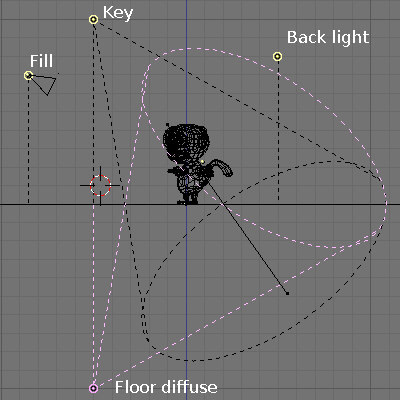Take notes to remember studio flash setup
When Ange asked me to begin thinking about pictures for her upcoming music album, I took that as an opportunity for more Strobist inspired learning about what multiple flashes can do. After laying about my pocket studio of three 580EX I set a large white sheet across the room and set color balance using the Expodisc, an accessory I don’t leave home without anymore.
Meanwhile, I sent Ange applying a very generous layer of makeup foundation. And then I sent her for more. I too was shocked the first time I saw the enormous amount of makeup applied on a model, but makeup for looking good across a lens under flash light has nothing to do with the makeup that is used to spruce up looks under normal circumstances.
The post-processing is done with Gimp using mostly some clone brush with the spray nozzle to clean up a few remaining spots and some wrinkles. It could be much better, but these pictures are probably not the ones we will be using for the album cover – for now our work is about learning the techniques and discovering the possibilities. I am quite pleased with the lighting and the model preparation – and so is the model, but we still have a world of potential for more sophistication.
I am still very far from performing such captures in a controlled way – for now the process is still an haphazard stumble between semi-random trials and errors. Part of the problem is that I do not keep notes of the lighting setup I choose for each shot. I must admit that EXIF has made me lazy : I don’t bother to take any notes because I know that I’ll find all the essentials inside each file. But the camera still does not record the position of the flashes…
Some day each flash unit shall have an inertial guidance system aboard to record its 3D position and some transmission channel to pass it to the camera at capture time. But for now I have to fall back on something less futuristic…

As I went looking for tools I found that Kevin Kertz shared his rather nice Photoshop lighting setup shapes template. I like the concept and the drawing produced with such tools are rather nice instructional medias. But if I had the luxury of a desktop environment for taking such notes I might as well use Blender for describing lighting. But maybe that would be overkill…

So at the moment, an old fashioned notebook is all I can suggest for remembering studio flash setups… Too bad I can’t even read my own handwriting… If anyone has a suggestion for an efficient way of taking flash setup notes in the field, please do contribute a comment !
As a consolation while we are mentioning lighting you may want to read Chuck Gardner’s photography and lighting tutorials and especially the one where he illustrates how lighting is all about the subjective perception of contrast and relative brightness. I’m not there yet… But the longest journey always begins with a single step.
Leave a Reply
You must be logged in to post a comment.